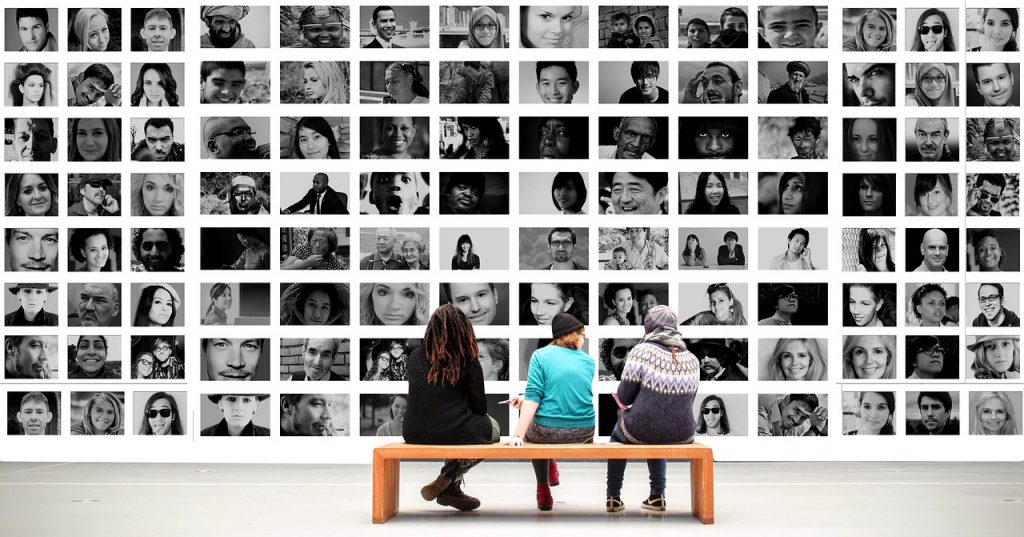
The Power of Visual Storytelling
The way we tell stories is changing drastically with the rise of digital technologies. And social media has been a major driving force behind the evolution of storytelling. Making those stories relatable and visually engaging is more relevant today than ever.
The Importance of Visuals
Many of us correlate speech and audio to storytelling. We think of someone verbally telling us something. But the introduction of visuals has proven to impact the way we understand stories. Let’s get scientific for a moment. Did you know that the brain processes visual information 60,000 times faster than text? That puts into question the old saying, “a picture is worth a thousand words.” In fact, it may be worth 60,000 words.
Another fact to consider is that humans remember 80% of what they see. That’s a huge gap compared to the 20% of what we read and 10% of what we hear. Hopefully, you’ll remember more than 20% of what’s written in this post! No worries, we’ve included some visuals just to make it more memorable.
Types of Visuals
When we talk about visuals, we’re referring to more than just still photography. Technology has created some amazing types of imagery over the years, including graphics, videos, GIFs, and more. Each one serves it’s purpose and helps get a message across in a unique way.
Combining these types can be a recipe for awesomeness, if used correctly. A mixed media approach has more flexibility and creative power to fuel your stories. The challenge is making it all come together in a way that flows and stays true to your message.
Photos and Graphics
We start with the most common visual seen in social media today: images. The rise of Instagram is a testament to pictures being a focal point in our social media consumption. Seriously, how many pictures have you seen on social media in the past 24 hours? The amount can be mind-boggling.
With so many images out there, is it possible to stand out? Of course. But don’t you need high-end equipment and professional software? Not really.
Here are some of the tools that we recommend using for photo editing and graphic design.
Photo Editing Tools
- Snapseed – Versatile image editing app that has a ton of features and options
- VSCO Cam – This app offers a unique set of filters to give your photos a specific mood
- Word Swag – Allows you to add stylized text over images on the go
- Over – Another easy-to-use app that applies text to photos
- Photofy – Offers filters, editing tools, and text/graphic overlays
- Square Ready – Fits wide or tall images into a square without cropping (i.e. for Instagram)
Graphic Design Tools
- Adobe Creative Cloud – Monthly subscription options for programs like Photoshop and Illustrator
- PIXLR – Alternative to Photoshop with plenty of similar editing options (kinda looks like Photoshop too!)
- Canva – Offers customizable templates and visual elements to design for social media
- Pablo by Buffer – Primarily for Twitter, helps create images with text over them in 30 seconds or less.
GIFs

Let’s focus on the innovative ways to use GIFs. We’ve seen this format creep into social media through platforms like Tumblr, Twitter, and now Facebook. It fits right between not being an image and not quite being a video either. In many occasions, GIFs get a point across better than text, emojis, and images. And now they’re becoming easier to share and more widespread.
The good news is that you don’t need fancy programs to create GIFs. There are lots
of free, user-friendly tools available to create and curate GIFs. If you’d like to add GIFs to your visual content arsenal, here are some useful tools:
GIF Tools
- GifLab – Another GIF-maker with similar features to Gifit
- Giphy – Database of existing GIFs from all over the web with a search option
Video
Compared to all other media type, video is the elephant in the room. It’s massive in all senses of the word, to the point that over 300 hours of video are uploaded to YouTube each minute. And now Facebook is pushing its video platform to compete with YouTube. One key factor to consider is that videos that are directly uploaded to Facebook get the most organic reach compared to text, images, and links. Hence, why it should be a part of everyone’s social strategy.
GoPro is killing it on social media with its video content. While they obviously have access to quality video cameras, much of their content is crowd-sourced from their own customers. It’s a unique situation where using customers’ stories actually tells GoPro’s brand story.
Whether you have a GoPro or a smartphone, quality video cameras are more accessible than ever. It’s up to you to find the best ways to leverage video content. Can you tap into your customers for video? How about curating existing video from relevant sources? Weigh your options and execute.
If you choose to create your own video content, here are some tools to help out:
Video Tools
- iMovie – Comes with all Macs and available on iOS devices
- Nutshell – Snap three pictures. Add captions. Choose graphics. Create a cinematic story
- Videoshop – Easy video editor with fast editing tools, filters for personalizing your videos
- PicPlayPost – Create a collage of videos and photos in one single piece of media
- Hyperlapse – Shoot timelapse videos up to 12x faster
- GoPro – Tell your story in one tap with QuikStories.
Social Video Apps
- Periscope – App that allows users to live stream from their smartphones
- Snapchat – Snap photos and videos to share with friends that disappear after a few seconds.
- Fyuse – A ‘spatial photography’ app which lets users capture and share interactive footage
- Flixel – Create and share cinemagraphs (part image, part video).
Infographics

Infographics bring to life what is commonly considered a boring topic: Data. By visualizing data, infographics showcase facts and figures in creative yet informative ways. Piggy backing off the shift to image-heavy media consumption, infographics have become very popular in recent years – helping people tell stories in an easy-to-digest and shareable manner.
Data can be powerful. Make sure you harness that power by showcasing it with impactful imagery. There are several ways to go about creating infographics. Here are a few tools and resources:
Infographic Tools
- Piktochart – Easy infographic design app that produces beautiful, high quality graphics
- Venngage – Another infographic-maker to try out
- Infogram – Yup, one more tool to create infographics (just to give you options)
- Visually – Access existing infographics from a variety of categories and industries
C.A.S.T. Your Story
On a final note, we’d like to provide some simple takeaways that can easily be described by the acronym, C.A.S.T.
Create with consistency – Make sure that your branding is visually represented in a consistent manner across all digital channels. This helps build and maintain brand recognition among your audience.
Ask “How does this fit into my story?” – Don’t just do things because it’s the latest fad. Always look at how it fits your brand’s goals and mission. Also, make sure it’s a viable means to reach your target audience.
Seek inspiration (don’t wait for it) – We have visual inspiration all around us, you just need to look for it sometimes. Inspiration won’t fall into your lap. Be an active participant in the process.
Test different perspectives – Don’t be afraid to experiment. Test new angles and different styles with your visuals. Never let fear restrict your creative potential.
Content in this article has been reposted from: http://www.verjanocommunications.com/visual-storytelling-social-media/.


